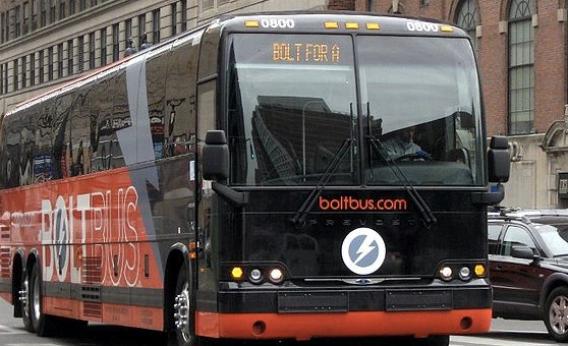One of the most interesting recent economic developments has been the growing appeal of relatively upscale intercity buses as a means of transportation:
Megabus.com and BoltBus led U.S. curbside bus companies that boosted trips by 32 percent this year as travelers opted to leave their cars behind and surf the Internet while traveling, DePaul University researchers said.
The popularity of U.S. intercity buses picking up passengers at the curb rather than in a terminal has been growing since the industry reversed a 46-year decline in 2006, Joseph Schwieterman, director of DePaul’s Chaddick Institute for Metropolitan Development in Chicago, said in a telephone interview. Bus traffic including traditional service grew this year at the fastest pace since 2008, the institute said in astudy released today.
Like Duncan Black, I’m far from certain that the right way to understand this is actually as intercity bus trips substituting for intercity car rides. The way I would primarily interpret it is as these services leading to additional trips that wouldn’t otherwise have been taken. Instead of riding Amtrak to New York once a year, you ride the bus three times instead. But to me the most interesting thing about these services isn’t how successful they are right now, but how successful they could be in a future of effective congestion pricing on the northeast’s roads. The charges that would be necessary to make a trip up or down I-95 relatively untrafficked would be pretty hefty. Since a bus could spread the price of a congestion charge across many passengers, this would serve to expand the price gap between a bus trip or a car trip. At the same time, however, traffic reduction would substantial cut the speed gap between a bus and Amtrak’s Northeast Corridor service.
Non-car intercity transport is always going to be less appealing in other less dense parts of the country since the value of having your car with you at the endpoint is higher. But as those are also the regions that lack recent intercity rail service, the value of a stronger bus option in terms of relieving congestion at airports would in some ways be higher. A little bit lost in the shuffle in the ideological wrangling that seems to have killed dreams of high-speed rail is that as the U.S. adds a hundred million new people over the next forty years, we’re definitely going to have to do something to accommodate their movements. We’re not exactly building dozens of new airports and you’re not going to cut a brand new freeway through New Jersey.
